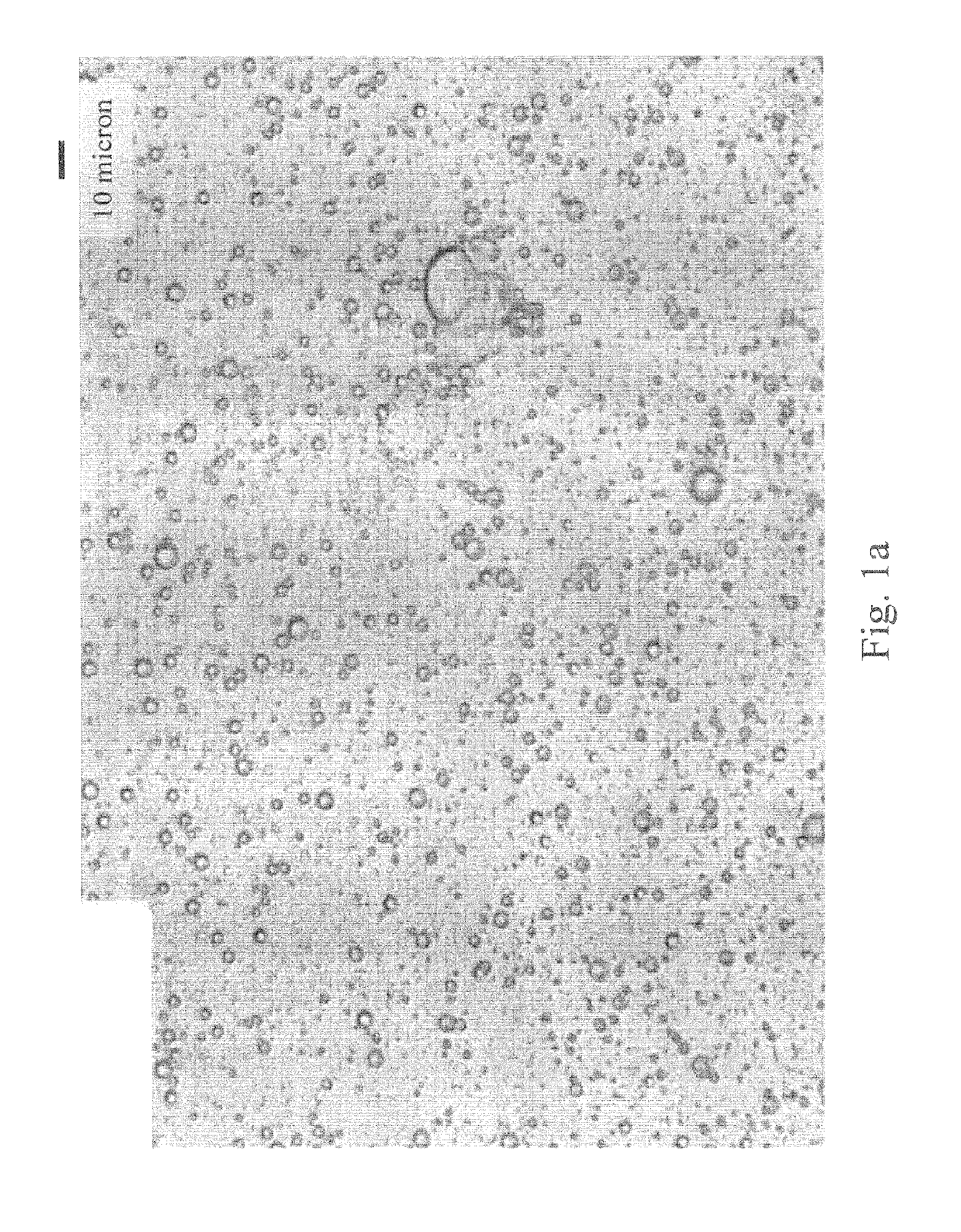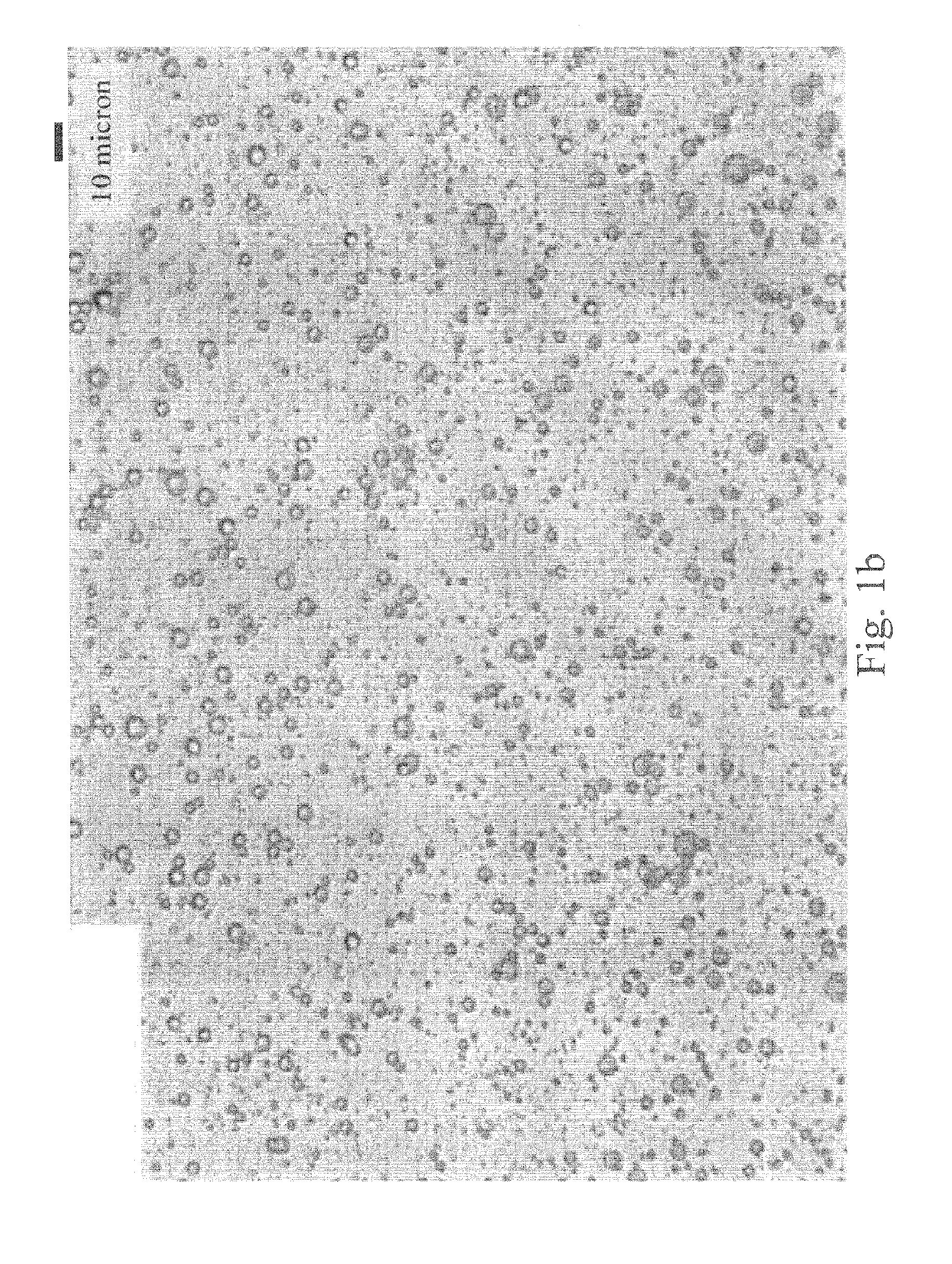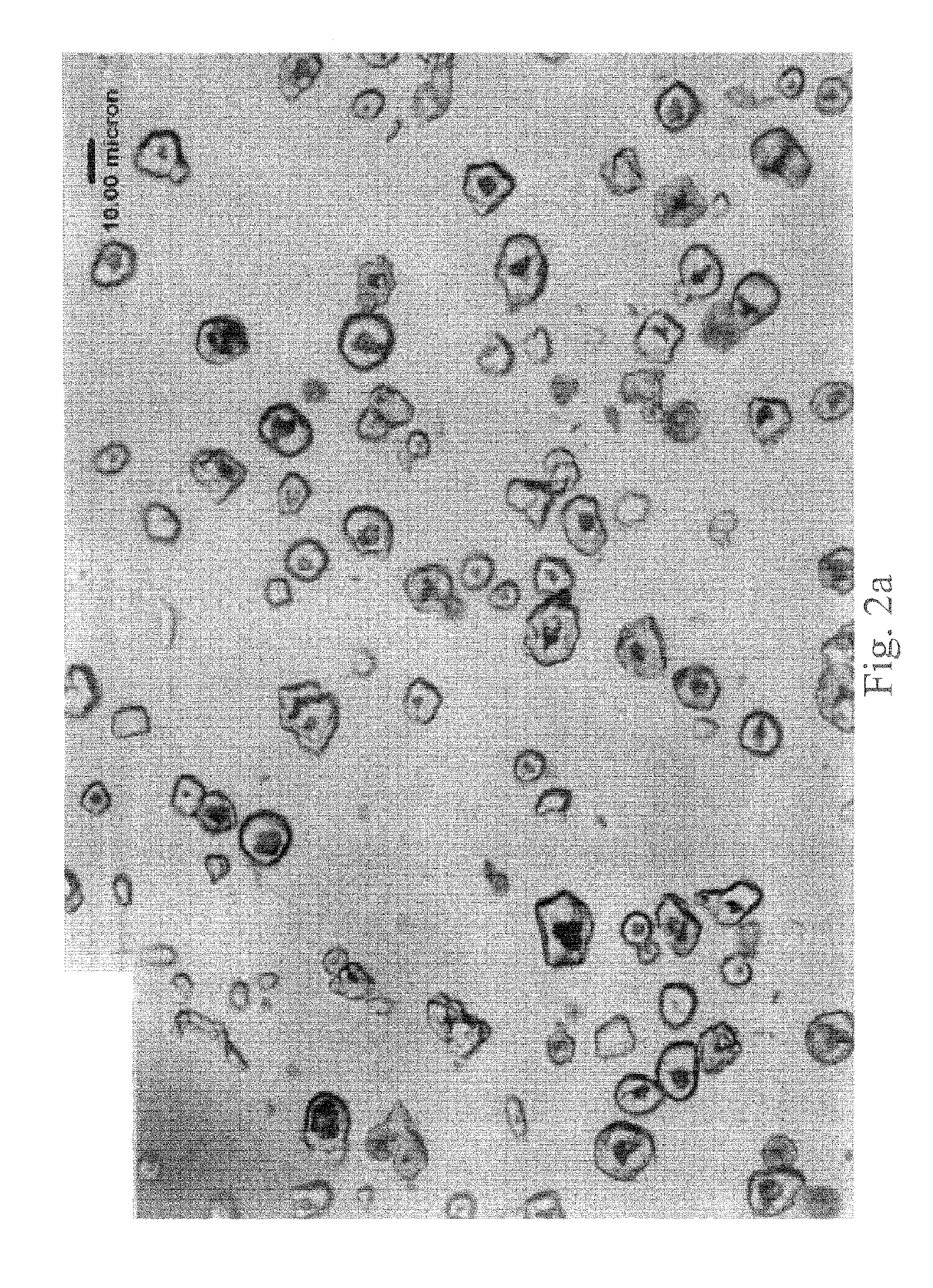Starch esters and method of preparation
- Summary
- Abstract
- Description
- Claims
- Application Information
AI Technical Summary
Problems solved by technology
Method used
Image
Examples
example 1
[0039]In this example, NaOH was used to adjust the initial pH of the starch slurry and the resulting effects on the degree of substitution (“D.S.”) and reaction efficiency (“R.E.”) of the starch were measured.
[0040]Waxy maize starch (100 g) was suspended in distilled water (150 mL) with agitation. The pH of the starch slurry was adjusted to 7.5 and 9.5 with 3% (w / w) NaOH. The suspension was filtered and the starch cake was mixed with 3% OSA (based on the dry weight of starch) using a mixer (Model K45SSWH, KitchenAid, St. Joseph, Mich.) at 2nd speed for 15 minutes. The mixture was dried in a forced-air oven at 35° C. overnight until the moisture content was below 12%. The starch mixture was spread over an oven pan (38 cm×26 cm) and heated at 160° C. for 1 hour, 2 hours, or 4 hours. Native waxy maize starch was used as a control. Degree of substitution and reaction efficiency were measured by titration method 1. pH after treatment was measured by suspending a portion of the treated st...
example 2
[0043]In this example, Na2CO3 was used to adjust the initial pH of the starch slurry and the resulting effects on Degree of Substitution (“D.S.”), reaction efficiency (“R.E.”), and starch solubility were measured.
[0044]Waxy maize starch (100 g) was suspended in distilled water (150 mL) with agitation. A weighed amount of Na2CO3 was added to the starch slurry. The experiments were carried out as described in Example 1, except that sample 2-A was heated at 160° C. for 4 hours, then was reheated at 190° C. for 2 hours. In contrast, sample 2-B was heated at 190° C. for 2 hours. D.S. and R.E. of the samples heat treated at 190° C. were calculated using titration method 2. D.S. and R.E. of other samples were determined by titration method 1.
[0045]As shown in Table 2, the more basic Na2CO3-treated starch slurries generally produced higher D.S. and R.E. values. The highest D.S. was achieved at pH 10.3. In addition, solubility of the starch was found to be higher when the starch slurry combi...
example 3
[0047]In this example, NH4HCO3 was used to adjust the initial pH and the resulting effects on Degree of Substitution (“D.S.”), reaction efficiency (“R.E.”), and starch solubility were measured.
[0048]Waxy maize starch (100 g) was suspended in distilled water (150 mL) with agitation. A weighed amount of NH4HCO3 was added to the suspension. The experiment was carried out as described in Example 1. Sample 3-A was heated at 160° C. for 4 hours was reheated at 190° C. for 2 hours. D.S. and R.E. were measured by titration method 2.
[0049]As shown in Table 3, the use of NH4HCO3 was effective in achieving relatively high D.S. and R.E. values especially when the starch was heated for longer periods of time and / or at higher temperatures. In addition, it was shown that use of NH4HCO3 in conjunction with a higher heat treatment temperature (190° C.) greatly increased the solubility of the sample.
[0050]
TABLE 3Samples adjusted to pH 8.57 by NH4HCO3, and heat treated at 160° C.% NH4HCO3No.Adjusted p...
PUM
| Property | Measurement | Unit |
|---|---|---|
| temperature | aaaaa | aaaaa |
| temperature | aaaaa | aaaaa |
| temperature | aaaaa | aaaaa |
Abstract
Description
Claims
Application Information
 Login to View More
Login to View More - R&D
- Intellectual Property
- Life Sciences
- Materials
- Tech Scout
- Unparalleled Data Quality
- Higher Quality Content
- 60% Fewer Hallucinations
Browse by: Latest US Patents, China's latest patents, Technical Efficacy Thesaurus, Application Domain, Technology Topic, Popular Technical Reports.
© 2025 PatSnap. All rights reserved.Legal|Privacy policy|Modern Slavery Act Transparency Statement|Sitemap|About US| Contact US: help@patsnap.com



